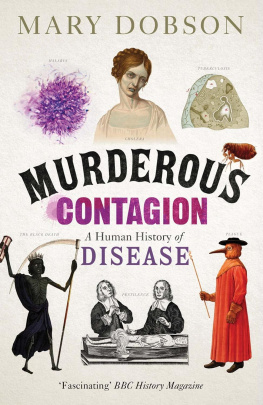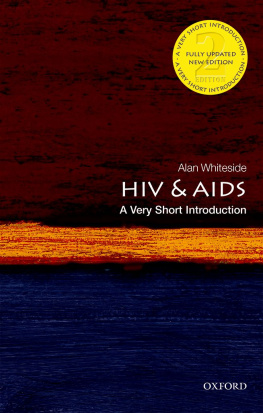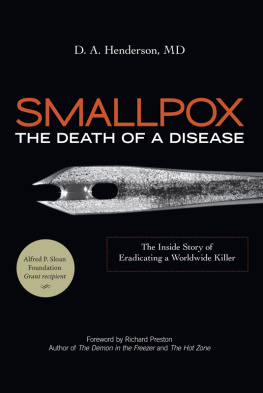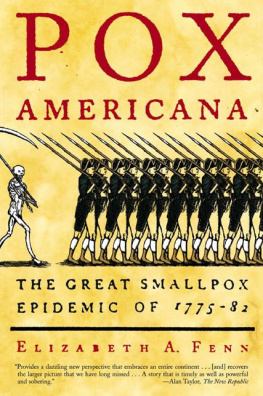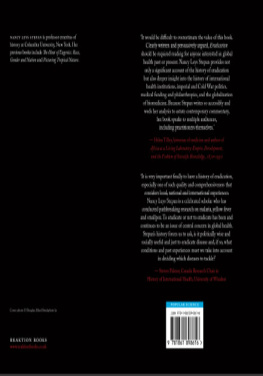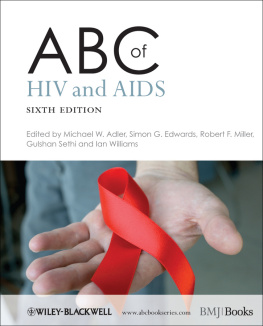ADVENTURES OF A FEMALE MEDICAL DETECTIVE

ADVENTURES OF A FEMALE MEDICAL DETECTIVE
IN PURSUIT OF SMALLPOX AND AIDS
Mary Guinan, PhD, MD
with Anne D. Mather


2016 Mary Guinan
All rights reserved. Published 2016
Printed in the United States of America on acid-free paper
9 8 7 6 5 4 3 2 1
Johns Hopkins University Press
2715 North Charles Street
Baltimore, Maryland 21218-4363
www.press.jhu.edu
Library of Congress Cataloging-in-Publication Data
Names: Guinan, Mary E., author. | Mather, Anne D., author.
Title: Adventures of a female medical detective : in pursuit of smallpox and AIDS / Mary Guinan with Anne D. Mather.
Description: Baltimore : Johns Hopkins University Press, 2016. | Includes bibliographical references and index.
Identifiers: LCCN 2015034008 | ISBN 9781421419992 (hardback) | ISBN 1421419998 (hardback) | ISBN 9781421420004 (electronic)
Subjects: LCSH: Guinan, MaryHealth. | Women physiciansUnited StatesBiography. | Women in medicineBiography. | EpidemiologyCase studies. | BISAC: MEDICAL / Public Health. | MEDICAL / Infectious Diseases. | BIOGRAPHY & AUTOBIOGRAPHY / Personal Memoirs.
Classification: LCC R692.G85 2016 | DDC 610.82dc23 LC record available at http://lccn.loc.gov/2015034008
A catalog record for this book is available from the British Library.
Special discounts are available for bulk purchases of this book. For more information, please contact Special Sales at 410-516-6936 or .
Johns Hopkins University Press uses environmentally friendly book materials, including recycled text paper that is composed of at least 30 percent post-consumer waste, whenever possible.
TO JOAN, BRENDAN, AND CHRISTOPHER
CONTENTS
ACKNOWLEDGMENTS
TO LIBRARIANS Xan Goodman (Health and Science Librarian, University of Nevada, Las Vegas); Terry Henner (Head of Outreach Services, Savitt Medical Library, University of Nevada School of Medicine), who enthusiastically answered every one of my multiple requests for help in finding references and out-of-print books; and Mary Hilpertshauser (Historic Collections Manager, David J. Sencer CDC Museum), who tracked down photos and historical information that were invaluable and is now preserving the history of CDCs contribution to smallpox eradication.
To all my former CDC colleagues who helped me during the writing of this book, especially Harold Jaffe and James Curran, with whom I first worked in the sexually transmitted diseases unit and then transitioned to investigate the emerging AIDS epidemic; Claire Broome, a valued friend and collaborator on the Listeria dilemma; Mary Serdula, who shared the assignment in Pakistan and provided photos; Eugene McCray, who led the nationwide needlestick study and helped me find all the relevant papers; Vince Radke, for keeping smallpoxers connected; Walter Orenstein, with whom I was assigned to India and shared the joy of discovery of our careers as medical detectives; Helene Gayle, who gave me sage advice I badly needed at various times in my life and encouraged me to write; Verla Neslund, my CDC lawyer, who ably helped me with many tricky legal issues; Wanda Jones, who helped with my testimony on the Listeria case; and of course Bill Foege, whose leadership and vision continue to inspire me even after forty years. To my coauthor Anne D. Mather, who was the managing editor of CDCs weekly newsletter, the MMWR, when I first met her in 1974, and who edited its article that reported the first cases of AIDS in 1981. Without her persistent encouragement, historical knowledge, good humor, and creative editing, this book would not have been written.
To Gary Wormser, my medical school classmate, with whom I worked when investigating the early AIDS cases in New York and who had the courage to testify in support of John Does employment despite the risk to his career. To the anonymous reviewers who convinced Johns Hopkins University Press to publish the book. To the fantastic efforts of JHUP staff: Kelly Squazzo, first acquisition editor; followed by Robin Coleman, who enthusiastically promoted the book and went to extraordinary measures to shepherd it through the system; Isla Hamilton-Short, who was consistently there, especially during the editor transition, to troubleshoot innumerable issues while remaining calm and pleasant; editors Juliana McCarthy and Ashleigh McKown; and our publicist, Kathryn Marguy.
A special acknowledgment to the late Randy Shilts, one of my heroes, who in 1981, during the early epidemic, dedicated his column in the San Francisco Chronicle to AIDS, when most other journalists and newspapers avoided AIDS coverage; who wrote the definitive history of the emerging epidemic in And the Band Played On, one of the most important books of the twentieth century; and who supported the closing of gay bathhouses in San Francisco, despite vilification by the gay community, because he knew it was the right thing to do to reduce the spread of AIDS.
And finally to my family, especially my niece, Kate Guinan, whose wonderful art enlivens the back cover and interior of the book; my sister Joan Lunney, who when she read my first story told me to get an editor; and to my life partner Christopher Horton, who never failed to encourage me.
ADVENTURES OF A FEMALE MEDICAL DETECTIVE
Introduction

MANY people have told me that they wished they had known about medical detectives when they were deciding on a career. Until recently, few young people were exposed to medical detective stories or to undergraduate experiences that might have led them to a career as a medical detective, that is, a career in public health.
Epidemiology is the tool of the medical detective. It is the branch of science that studies the patterns, causes, and effects of health and disease conditions in defined populations. The worldwide symbol of field epidemiologists is the hole in the sole, evidence that we have worn out our shoes tracking down vital clues.
Until recently, courses in epidemiology were usually available only in advanced degree programs of medicine and public health. Now, fortunately, such courses are part of a growing number of American universities undergraduate programs in public health.
Because public health or population health is not well understood by the American public, I wrote these stories to help readers better understand and value the public health system that exists for the protection of the nations health and for the prevention of disease and injury. My purpose also was to show the work of medical detectives as interesting, often fascinating, and personally rewarding, and to encourage young scientists to enter a field where dedication to improving the lives of others has its own reward.
For this book, I tried to follow the format of the Sherlock Holmes stories by focusing on cases in which I was part of the investigation. Unlike Mr. Holmes, however, I was never the most important leader. A medical detective has a small part in a team effort, usually a very large team. Perhaps millions participated in the worldwide smallpox eradication effort, and certainly the investigation of the AIDS epidemic involved hundreds of thousands of scientists and public health and healthcare workers around the world.
Next page



